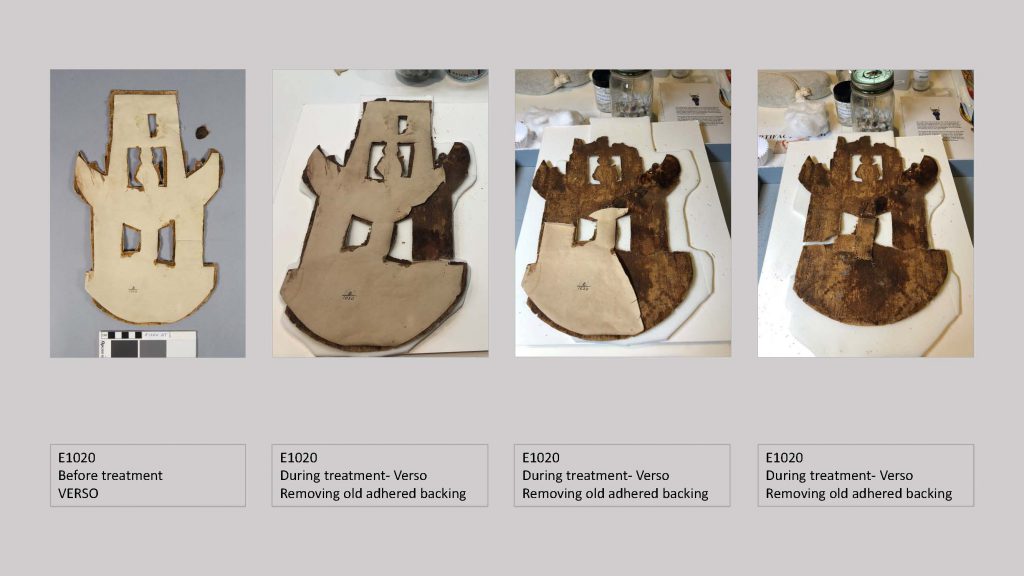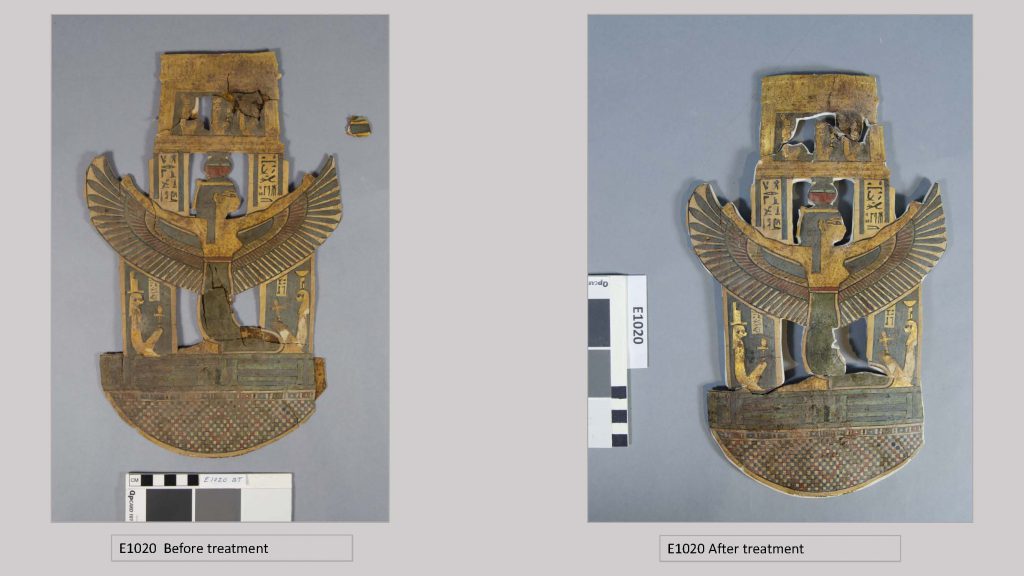by Anna O’Neill, Julia Commander, and Jessica Betz Abel
Hello from the Penn Museum Conservation Lab Annex (CLA)! Since Lynn’s introduction, we’ve had a little bit of time to settle into our new, off-site facility and get started on some seriously big projects. Our primary task here is working on architectural elements that were part of the palace of the Pharaoh Merenptah, who ruled Egypt from Memphis from 1213–1203 BCE. We have doorways, windows, and other objects from the palace which will be displayed in the new Ancient Egypt & Nubia Galleries to give visitors the experience of being in an ancient Egyptian building. But first, we have to put them together!

We have four doorways that will go into the galleries, all of which are very large and in many pieces. They are made of limestone and intricately carved, with traces of inlay and paint. Our first project is Doorway 1, which will be about 12 feet tall once it’s all together. It’s never been displayed before, but it was partially treated in the past. Some fragments are joined together with adhesive and metal pins, and we can tell that some of the decorated surfaces were coated with a consolidant. The fragments are also very dark and dirty from almost 100 years in storage.
Doorway 1 is in thirteen major pieces, which were all on different pallets when they were moved to CLA. With a little bit of effort and a lot of maneuvering with pallet jacks, we grouped the fragments together. It was very satisfying to figure out how all the pieces fit together and form a door!

Since we’re using Doorway 1 as our pilot project to figure out how we’ll treat the rest of the palace objects, we’ve spent a lot of time testing different conservation approaches. Since the doorway is discolored with dirt and one or more old coatings, we’ve been experimenting with gel cleaning and found two methods that work well for what we need – hot agar and Nanorestore gels® Peggy. We’ve talked about using other kinds of gel before.
Agar is a product of red seaweed and contains a polysaccharide called agarose. When it’s dissolved in water and heated, agarose forms long molecular chains – that means that when it sets, agar becomes a rigid gel that can be peeled up as a sheet without leaving problematic residues behind. The long agarose chains create pockets that hold solvents on the surface of the object, allowing them to work on grime or coatings without soaking in too deeply. You can add different cleaning solutions to agar, but plain deionized water gave us the results we wanted. We dissolved agar in deionized water and heated it in the microwave to form the solution, then poured it directly onto the surface of the stone and allowed it to cool. Applying it as a liquid means that the gel conforms well to the irregularities in the object and lets us get into all the nooks and crannies.

The Peggy 6 gel is made of poly (vinyl acetate) and comes as a thin polymer sheet. It feels a little like the gummy hands you can stick on windows – stretchy and flexible but strong. Like agar, the Peggy gel can be used with different cleaning solutions but we stuck with deionized water. The gel is laid on the surface of the stone to let the water do its work on the grime. Because the Peggy is a stretchy sheet, it can skim right over delicate carvings that might contain pigment. Another advantage of the Peggy gel is that it’s reusable – we just rinse it out in deionized water and use it again.

To clean Doorway 1 we used a combination of the agar and Peggy gels. Both gels soften the dirt and coating, and often looks pretty grimy when they’re peeled up. Once the gel is removed, the stone is wiped with cotton and more deionized water to remove even more dirt. We were pretty pleased with the difference between the cleaned and dirty surfaces, and using the gels meant that the process was much more efficient and gentler on the stone than using swabs.
Other parts of the treatment include reversing old repairs (or deciding when to leave them be), assembling fragments, and figuring out how to display the doorway in the gallery. We’ll check back in later with more monumental updates!











